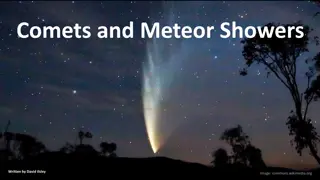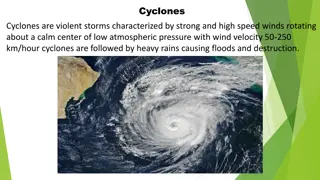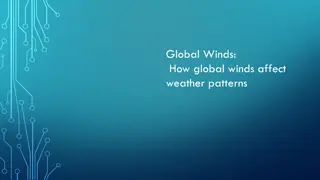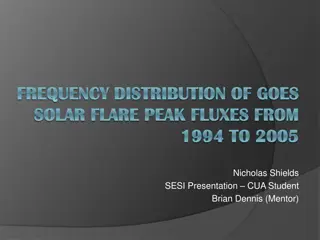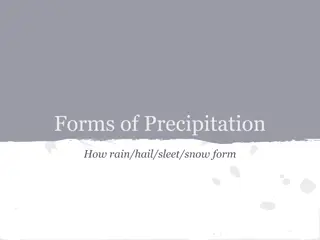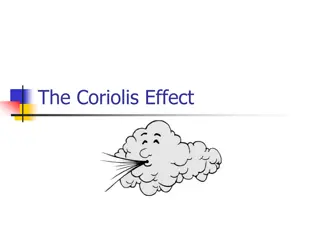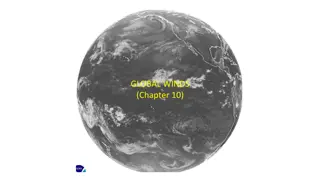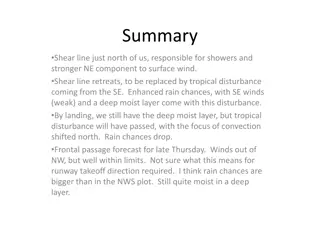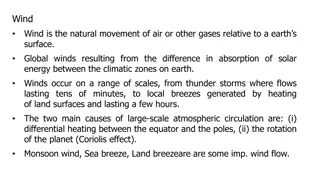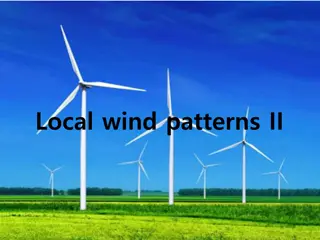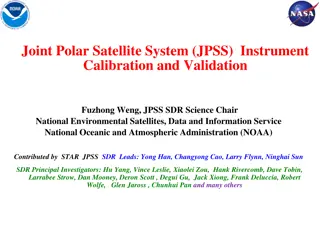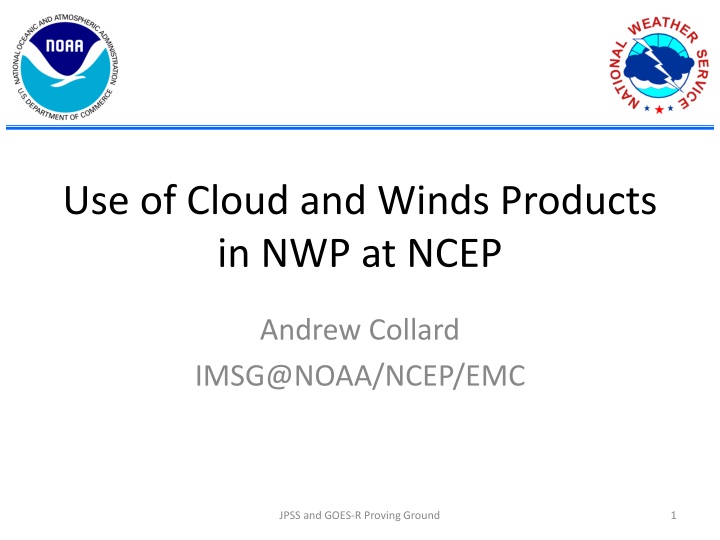
Utilizing Cloud and Wind Products in NWP at NCEP - Insights and Innovations
In NWP systems at NCEP, cloud information from geostationary and polar imagers is crucial. Cloud data from VIIRS and IASI help refine observations and constrain choices, while clear-sky radiances play a pivotal role in analysis. The integration of atmospheric motion vectors from various platforms enhances forecast accuracy, with ongoing exploration of new wind data sources for further advancements.
Download Presentation

Please find below an Image/Link to download the presentation.
The content on the website is provided AS IS for your information and personal use only. It may not be sold, licensed, or shared on other websites without obtaining consent from the author. If you encounter any issues during the download, it is possible that the publisher has removed the file from their server.
You are allowed to download the files provided on this website for personal or commercial use, subject to the condition that they are used lawfully. All files are the property of their respective owners.
The content on the website is provided AS IS for your information and personal use only. It may not be sold, licensed, or shared on other websites without obtaining consent from the author.
E N D
Presentation Transcript
Use of Cloud and Winds Products in NWP at NCEP Andrew Collard IMSG@NOAA/NCEP/EMC JPSS and GOES-R Proving Ground 1
How do we use cloud information in NWP? In our NWP systems we use cloud information from both geostationary and polar imagers. Cloud information from VIIRS, mapped onto the CrIS FOV, is used to constrain the thinning choices for CrIS. For IASI we use AVHRR radiance cluster information within the FOV We are also testing the use of VIIRS cloud information mapped onto the ATMS field of view to help identify areas of supercooled water clouds with encouraging results. JPSS and GOES-R Proving Ground 2
Clear Sky Radiances Averaged Clear sky radiance products are used for Geostationary Imagers (mostly water vapor channels) AVHRR and VIIRS (window channels used in sea surface temperature analysis) The quality of the clear-sky radiance product is crucially dependent on the quality of the cloud product. JPSS and GOES-R Proving Ground 3
ABI_G16 CSR Data: Cloud Mask Impact Obs Fcst (OmF) for surface channel Obs Fcst (OmF) for surface channel Baseline cloud mask Enterprise cloud mask 4
ABI_G17 CSR Data Initial View ABI_G17 ABI_G16 SEVIRI_M11 AHI_Himawari8 SEVIRI_M08
Atmospheric Motion Vectors The global forecast system makes extensive use of AMVs from both Geostationary and Polar platforms We are currently assimilating cloud top infrared; cloud top water vapor and clear sky water vapor winds. from GOES-16, GOES-17, Meteosat-8, Meteosat-11 and Himawari-9 in geostationary orbit AVHRR; MODIS and VIIRS in polar orbit ASCAT from MetOp satellites (not strictly AMVs) We are testing LEO-GEO winds JPSS and GOES-R Proving Ground 6
The Future Continue to explore additional winds sources Currently evaluating ADM-Aeolus Explore the use of situation dependent observation error (proxy for height assignment uncertainty) How should we extract wind information from hyperspectral geostationary sounders? Level-2 products or direct radiance assimilation. JPSS and GOES-R Proving Ground 7


